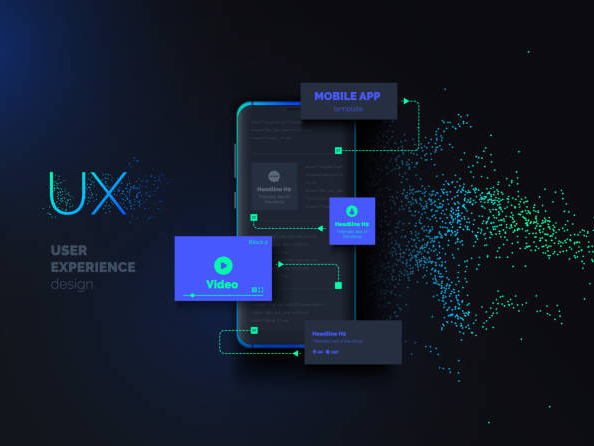
User experience (UX) design is a continuously evolving discipline like technology. UX designers are faced with both unique obstacles and intriguing opportunities as a result of the development of new technologies.
In this article, we’ll look at the difficulties in UX design for new technologies and the importance of a UI UX Certification program.
Understanding the user in a new context
One of the primary challenges in UX design for emerging technologies is understanding how users interact with these technologies in a new context. Traditional design principles and user behavior patterns may not apply directly to VR, AR, or AI interfaces.
Designers need to delve deep into the psychology of users and conduct extensive user research to gain insights into their expectations and behaviors when interacting with these emerging technologies.
Designing for Immersion and Presence
Immersion and presence are significant elements directly affecting the user experience in VR and AR. Designers must produce user interfaces that capture and engross consumers so they may experience a complete immersion in the virtual world. It takes great attention to detail to achieve this level of immersion, including realistic images, responsive interactions, and user interfaces that increase the sense of presence.
Navigating the Challenges of Interaction Design
Another crucial component of UX design for developing technology is interaction design. Not all developing technologies can be used with conventional interaction models, such as touch or mouse-based interfaces.
With VR, for instance, users may interact with the environment through hand gestures or controllers, but with AR interfaces, gesture detection or voice commands may be used. To guarantee that the interactions feel natural and intuitive to users, UX designers must adjust to these new interaction paradigms.
Balancing Realism and User-Friendliness
In developing technology, distinguishing between realism in user experiences and usability is frequently difficult. Realistic visuals and interactions can improve immersion but complicate the user interface and make it more difficult for consumers to utilize. To make technology usable and accessible for consumers while still producing engaging experiences, UX designers must balance realism and usability.
Addressing Ethical Considerations
For UX designers, emerging technologies like AI present new ethical challenges. To deliver individualized experiences, for instance, AI-powered interfaces may gather and process huge amounts of user data. Data privacy, transparency, and the possibility of algorithmic biases must all be considered by designers.
UX designers may create technologies that deliver outstanding experiences and promote user trust and respect by including ethical issues in the design process.
Adapting to Rapid Technological Advancements
The speed at which technology develops is another difficulty in developing user experiences for emerging technologies.
UX designers must keep up with new developments and modify their design strategies due to the emergence of new technology. One must continually learn and explore to keep up with the most recent tools, methodologies, and design patterns in the dynamic environment of evolving technologies.
Collaboration and Interdisciplinary Skills
UX design for new technology offers a wide range of intriguing prospects. Experts from various disciplines, including computer science, psychology, and industrial design, can work alongside designers. The unique and comprehensive experiences that result from this interdisciplinary partnership push the boundaries of what is conceivable.
Creating Delightful and Impactful Experiences
Despite these obstacles, UX design for emerging technologies has a wealth of chances to develop enjoyable and memorable experiences. Designers can teleport people to new worlds, enable immersive storytelling, and transform various industries, including gaming, education, and healthcare, with the help of technologies like VR and AR.
Features of a UI/UX Certification Program
Numerous UI/UX certification programs have been developed in response to this need to provide aspiring designers with the necessary abilities. Here are some important aspects to take into account while assessing a UI/UX certification program:
Read Also: Key Differences and Tips To Understand UX and UI
● Practical Project-Based Learning
UI/UX design requires more than just theory to be successful. A certification program needs to prioritize project-based, practical learning. Students should be provided opportunities for real-world design challenges, portfolio-worthy projects, and peer and instructor evaluation. Gaining real-world experience is crucial for building the abilities and self-assurance required for a successful UI/UX design career.
● Industry-Relevant Tools and Technologies
Working with UI/UX design requires using various tools and technologies. Students in a solid certification program should be introduced to popular design programs like Sketch, Figma, or InVision. It ought to cover new UI/UX trends and innovations, including designing for mobile apps, responsive design, voice interfaces, and virtual reality.
● User-Centered Design Approach
UI/UX design revolves around creating products that meet the needs and expectations of users. Understanding user psychology and behavior is crucial in designing intuitive and engaging experiences.
● Networking and Industry Connections
A valuable UI/UX certification program should provide opportunities for networking and industry connections. This can include guest lectures from industry professionals, participation in design events or conferences, and access to a community of alumni and industry practitioners. Building connections within the UI/UX design community can lead to job opportunities and ongoing professional development. The global UI market will be worth a staggering $20,058 million by 2028.
● Flexibility and Accessibility
Consider the flexibility and accessibility of the certification program. Some programs offer online or part-time options, allowing students to balance their studies with other commitments. Look for programs that provide a flexible schedule and supportive resources to accommodate diverse learners.
● Recognition and Credibility
Selecting a UI/UX certification program that is accepted within the industry is crucial. Look for programs connected to respectable businesses, trade organizations, or professional bodies. Reputable certification programs give your resume more legitimacy and raise your chances of landing UI/UX design jobs.
Designers can produce remarkable experiences that push the limits of innovation by understanding the specific settings, balancing realism with user-friendliness, addressing ethical problems, and keeping up with rapid technological improvements. UX design will remain crucial in determining how users interact with and experience the digital world of the future as emergent technologies continue to develop.







